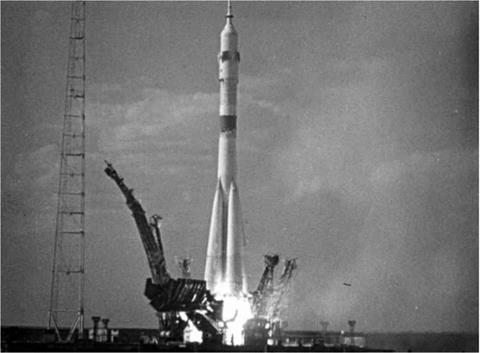Soviet/Russian orbital launchers
The Russian ICBM R7-based Vostok booster with an upper stage was used to launch Yuri Gagarin on the first manned space flight on 12 April 1961. Five more missions followed until an “up-rated” Voskhod craft was launched using the Voskhod rocket, another derivative of the R7. A series of Soyuz boosters, also based on the R7 first stage, have been used to launch crewed missions since 1967 and the launcher will continue for many more years to send Soyuz International Space Station crew ferry and emergency return vehicles aloft.
The basic R7 launch vehicle had its origins in 1947, with the idea of grouping (clustering) rocket stages together instead of stacking them on top of each other (as with Saturn V).The final configuration from studies became Izdelie 8K71 (Product 8K71). Originally developed as an ICBM, it featured a central sustainer engine (Blok A) to which four strap-on boosters were attached (Blok B, V, G and D) forming stage 1. The central engine was the RD-108, providing 75 tons of thrust at lift off and burning for 304 seconds, while the four RD-107 boosters delivered 83 tons of thrust and burned for 122 seconds, separating at burn-out to allow the central sustainer to continue the
|
A Soyuz launch |
ascent. Both engines used LOX/kerosene and remained the core propulsion vehicle for all Soviet and Russian manned launches and a significant number of unmanned ones. Depending on the payload, additional upper stages were added to propel the payload into orbit. The central core of the R7 stands 26m (85 ft) with a diameter of 2.95 m (9.5 ft) tapering to 2.15 m (7 ft) to accommodate the four strap-on stages. Each of the boosters was 19 m (62 ft) long.











